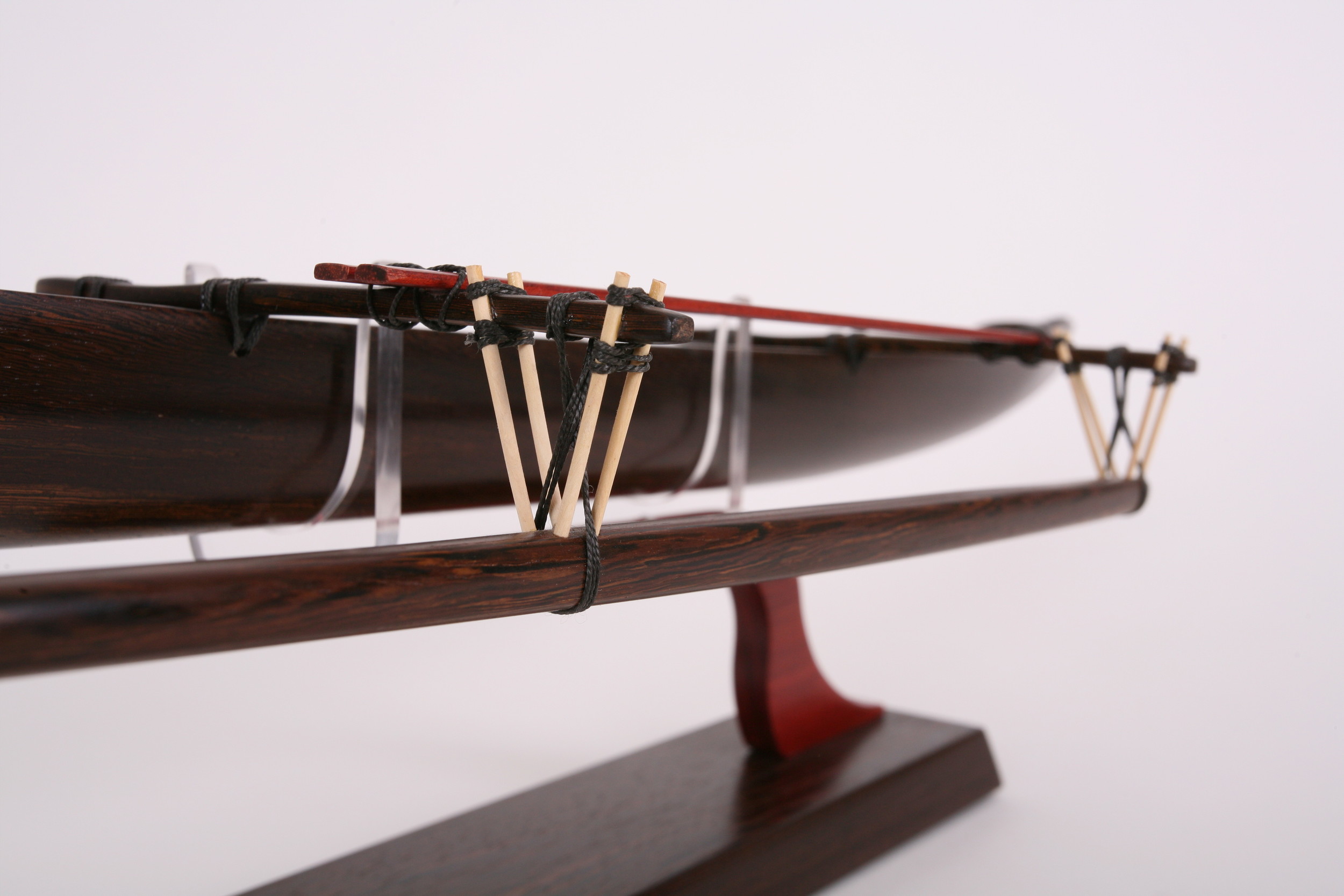


The Pao Pao dugout canoe was the ordinary craft used for fishing along the shores. Another type of Samoan dugout fishing canoe was the Soatau. The difference between the Pao Pao and Soatau was that the former had washstrakes, end deckings, and were rigged for sailing, whereas the Soatau seldom had washstrakes and also had shorter decking, or Manu in Hawaiian.
A third type of Samoan canoe was the elegant VA'A Alo (commonly called the bonito canoe), which was plank-built. This type of canoe, of which Francis made several models, is considered the most graceful of all Polynesian canoes. The Samoan canoe builders had a very inventive spirit, which led to innovation in the execution of their trade. For example, the Samoans formed the bow of their canoe to resemble the open mouth of a shark, which became known as a cutwater. This design divided the water as the canoe moved forward and allowed the canoe to move at higher speeds.
The Pao Pao dugout canoe was the ordinary craft used for fishing along the shores. Another type of Samoan dugout fishing canoe was the Soatau. The difference between the Pao Pao and Soatau was that the former had washstrakes, end deckings, and were rigged for sailing, whereas the Soatau seldom had washstrakes and also had shorter decking, or Manu in Hawaiian.
A third type of Samoan canoe was the elegant VA'A Alo (commonly called the bonito canoe), which was plank-built. This type of canoe, of which Francis made several models, is considered the most graceful of all Polynesian canoes. The Samoan canoe builders had a very inventive spirit, which led to innovation in the execution of their trade. For example, the Samoans formed the bow of their canoe to resemble the open mouth of a shark, which became known as a cutwater. This design divided the water as the canoe moved forward and allowed the canoe to move at higher speeds.